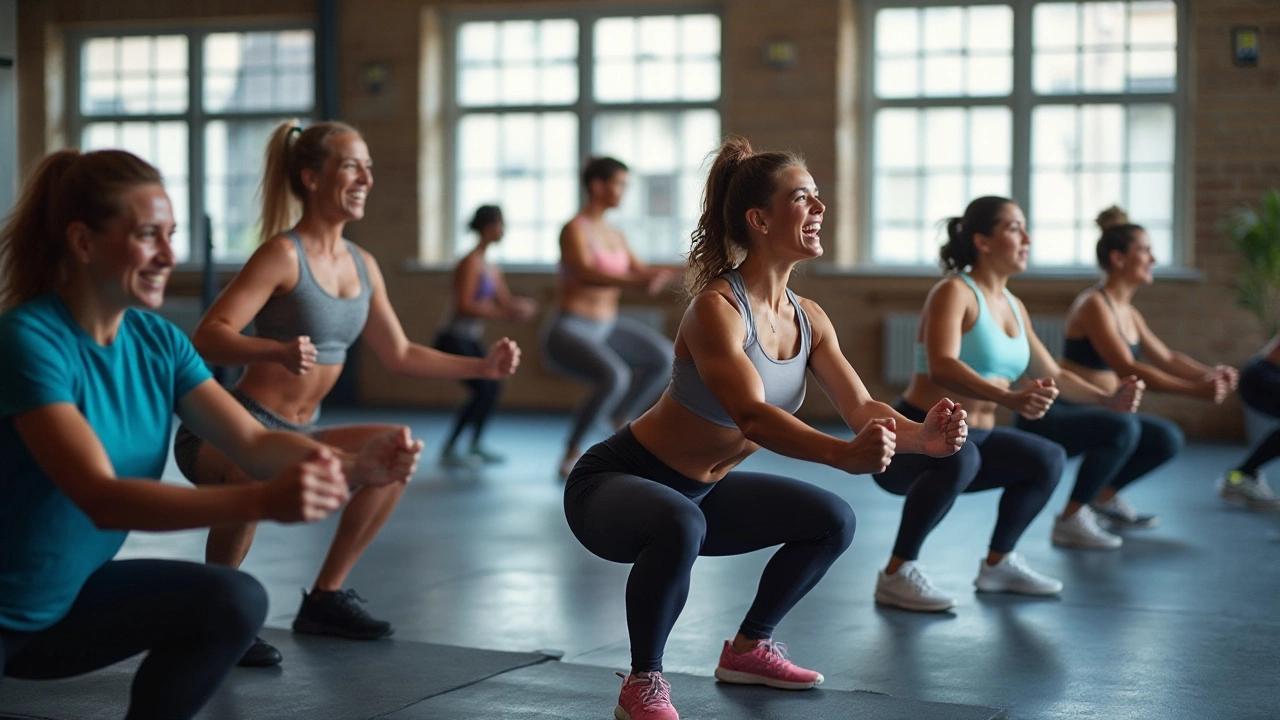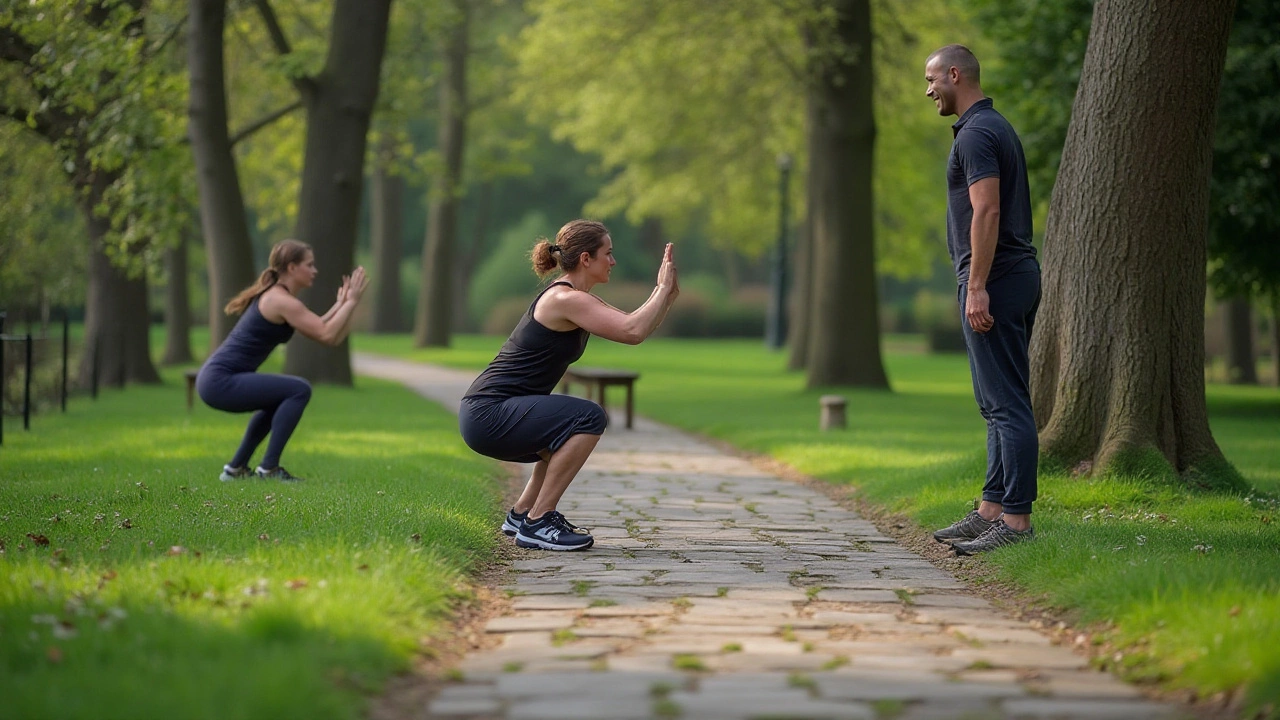Daily Squats Guide: Finding the Perfect Squat Count for Health and Fitness

Embarking on a fitness journey? Squats are an essential exercise that can transform your routine, offering strength and balance in a simple yet effective way. Understanding the right amount of squats to incorporate daily can enhance your results without overworking your body.
Delve into the many benefits squats offer, discover the optimal number that suits your personal goals, and ensure you're practicing with correct form and awareness to safety. With careful consideration and by following some tried and true tips, you can master this powerful exercise and elevate your workout game.
- Squat Benefits
- Determining Your Daily Squat Count
- Important Safety Precautions
- Tips to Maximize Squat Effectiveness
Squat Benefits
Squats, a staple in almost any fitness routine, deliver an incredible array of benefits that contribute to both physical health and athletic performance. For starters, squats are remarkable at building muscle throughout the entire body. While the primary focus is on the lower body, including the quads, hamstrings, and glutes, squats also engage the core, which is essential for maintaining stability and balance during the movement. The act of doing squats triggers muscle-building hormones which can enhance muscle development even in areas not directly targeted by the squat.
An additional plus to incorporating squats into your daily regiment is the improvement in functional mobility. Since squats mimic everyday movements such as sitting and standing, they prepare your body to handle similar actions more effectively. This kind of training is termed functional fitness. As people age, maintaining mobility is crucial to avoid injuries or physical limitations, and squats are a key exercise that promotes this aspect of wellness.
Moreover, squats contribute positively to the strengthening of the bones and joints. When performing a weighted squat, the act of resistance training encourages bone density, which is an essential factor in preventing osteoporosis. Joint health also gets a boost due to the production of synovial fluid, helping to lubricate joints and make everyday movements smoother. Consider squats as a way to invest in the long-term health of your body framework.
"Squats are a gateway exercise to building strength, developing balance, and gaining confidence," notes renowned trainer and author, Dr. Emily Splichal. "They engage the core, improve lower body flexibility, and promote heart health when performed consistently."
Alongside these structural benefits, squats significantly enhance cardiovascular health. Those who integrate squats into their daily workouts notice an improvement in heart rate and an increased metabolism. Because they involve the body's largest muscle groups, they're efficient at burning calories and increasing the heart rate, even in a short burst of activity. This makes squats an excellent choice for those aiming to lose weight or boost their aerobic endurance.
A final remarkable aspect of squats is their accessibility. They require minimal space and no equipment, making them easy to incorporate into any workout, whether you're at home, at the gym, or traveling. This simplicity means that people of all fitness levels, from beginners to advanced athletes, can benefit from adding squats to their routines. Through consistency and gradual increase in intensity, one can tailor squats to align with specific fitness goals.

Determining Your Daily Squat Count
The number of squats you should perform each day largely depends on a variety of personal factors, including your current fitness level, goals, and any physical limitations you might have. For beginners, starting with a smaller number of squats and gradually increasing the count is a smart approach. For instance, you might begin with just 10 to 15 squats per day, focusing on mastering form before ramping up the intensity. As you grow more comfortable and your fitness improves, slowly increase the number up to 30 or even 50 squats per day. This gradual progression helps in building muscle and endurance while minimizing the risk of injury.
However, if you're an experienced athlete or someone who is no stranger to regular workouts, you might aim higher, depending on your specific goals. For example, aiming for 100 squats daily can effectively support weight loss goals, enhance cardiovascular health, and build core strength. Yet, it's crucial to listen to your body. Pay attention to the signs it gives if you're pushing too hard, such as persistent soreness or discomfort in the knees or lower back area.
Pushing to achieve a higher daily squat count also demands a focus on balanced muscle development. Too much too soon can lead to imbalanced muscle growth which might introduce strain on your joints. Mix up your routine with various types of squats, like goblet squats or jump squats, to target different muscle groups and add variety to your workout. This technique not only promotes even development but prepares your muscles for increased workload over time.
In the words of renowned strength coach Charles Poliquin,
“Proper progression is the key. There are no shortcuts. If you want results, you have to earn them with hard work and perseverance.”This reinforces the idea that your squat count should not just be an arbitrary number but a result of strategic planning matching your fitness journey.
Here's a suggestion: try tracking your squat performance over weeks using a fitness app or a simple journal. This not only offers visual motivation but also provides insight into your progress, helping you to adjust your training load when needed. Setting mini-goals, like increasing your squat count by five every two weeks, can also help sustain your motivation while achieving significant milestones without plateauing quickly. Remember, quality always takes precedence over quantity. A lower count of perfectly performed squats is far more beneficial than a high count of poorly executed ones.
For women over 50, it's advised to remain mindful of bone density and joint health when determining squat counts, as bone strength can wane with age. Studies have shown that engaging in regular strength-training exercises, including squats, can help slow this process, promoting bone density and reducing the risk of fractures. Incorporating resistance bands or light weights may enhance the benefit, adding an extra challenge to strengthen bones and muscles effectively.

Important Safety Precautions
Integrating squats into your fitness routine wisely means understanding and respecting the precautions that safeguard your health. First on the list is mastering form. The correct squat stance includes feet shoulder-width apart with toes slightly pointed outwards. As you descend, bend your knees naturally while keeping your spine straight and chest up. A common mistake is curving the back, which can lead to unnecessary strain and injury. Aim for your thighs to be parallel to the floor or lower if flexibility allows, without compromising your posture.
Listening to your body is another crucial aspect of squat safety. If you feel pain—especially in the knees or lower back—stop immediately and reassess your form. Overexertion or incorrect alignment can exacerbate existing issues or lead to new injuries. Gradual progression is key, so if you're starting out, begin with bodyweight squats before adding resistance or increasing repetition counts. Always remember that quality trumps quantity; doing fewer squats with perfect form is far more beneficial than rushing through sets with haphazard technique.
“There is no harm in challenging yourself with squats, but when carried out improperly, you’re courting disaster. Respect your limits and build up gradually.” – Fitness Expert Emily Jacobs
It’s also important to consider environmental factors that can impact your squat performance. Choose a stable, flat surface to perform your squats, free from obstructions or tripping hazards. Wearing appropriate footwear with good support can help maintain balance and form. Tying your shoelaces securely might seem like a trivial detail, but it can prevent slips and subsequent injuries.
Mindful Progression and Injury Prevention
Injuries often happen not from the act of squatting but from a lack of preparation and warming up. Integrating a comprehensive warm-up routine that includes dynamic stretches targeting the lower body can prepare the muscles and joints for activity. Consider exercises such as lunges or light jogs on the spot as essentials before diving into squat sets. This increases blood flow and gradually raises your heart rate, priming your body.
Fitness enthusiasts with previous injuries or certain health conditions should seek medical advice before starting a rigorous squat regimen. Physical therapists or trainers can provide custom advice aligned with personal health profiles, ensuring safe practice. Adapting and modifying squats to accommodate your body’s needs is crucial; elevating heels with a block, for instance, can help if you have limited ankle mobility.
Implementing a regimen gradually not only avoids injuries but ensures continued progress. Documenting your workouts, noting any discomfort, and reflecting on your progression are useful strategies for maintaining a healthy workout journey.
Finally, hydrate adequately before and throughout your session to avoid muscle cramps. Squatting, like any exercise, requires energy and alertness, both of which are hampered without proper hydration and nutrition. The harmony of these elements fosters a productive and injury-free exercise experience.

Tips to Maximize Squat Effectiveness
Integrating squats into your daily routine offers numerous health benefits, from enhancing muscle strength to improving cardiovascular endurance. However, maximizing the effectiveness requires attention to technique. A common recommendation is to focus on keeping your feet shoulder-width apart and your toes slightly turned out. This position ensures stable footing and prepares your legs to bear weight effectively, contributing to optimal results. Moreover, when initiating a squat, engage your core and keep your chest lifted to maintain balance and prevent injuries.
Proper breathing plays a crucial role in performing squats effectively. Inhale deeply as you lower into the squat and exhale as you return to the standing position. This rhythm helps in regulating oxygen flow to your muscles, improving performance and stamina throughout your workout. Breathing correctly can make a significant difference, especially during high-repetition sessions, as it helps in managing fatigue.
Focus on Form
Maintaining the correct form is paramount for maximizing the benefits of squats. Avoid common mistakes such as allowing your knees to bow inward or letting your heels lift off the ground. Both can lead to injury and undermine your workout efficiency. Keeping the spine neutral and lowering until your thighs are parallel to the floor are key indicators of a well-executed squat. By concentrating on these details, you ensure that every rep counts, reinforcing your commitment to achieving fitness goals. Consider seeking guidance from a fitness professional to refine your form and tailor your squat regimen to individual needs.
"Squats contribute significantly to overall health improvement by engaging nearly every major muscle group in the lower body," says renowned fitness expert Dr. Lisa Adams. "When done correctly, they enhance strength, stability, and flexibility for daily activities."
Strength and Flexibility
Incorporating variety into your squat routine can further enhance effectiveness. Introducing different types of squats, such as sumo squats, jump squats, or adding weights with a barbell, keeps your muscles challenged and prevents workout plateaus. Each variety targets different muscles, promoting increased strength and flexibility. Remember to stretch before and after your sessions to maintain joint health and elasticity. Stretching reduces soreness and increases the range of motion, which is essential for squat effectiveness.
Don't overlook the value of setting measurable goals and recording progress. It is suggested to keep a workout journal or use fitness apps to track the number of squats performed, variations attempted, and any notable changes in strength or endurance. This documentation keeps you motivated and allows for tailored adjustments to your routine. Establishing a reward system or sharing achievements with fitness communities can further bolster motivation and provide valuable feedback and encouragement.
